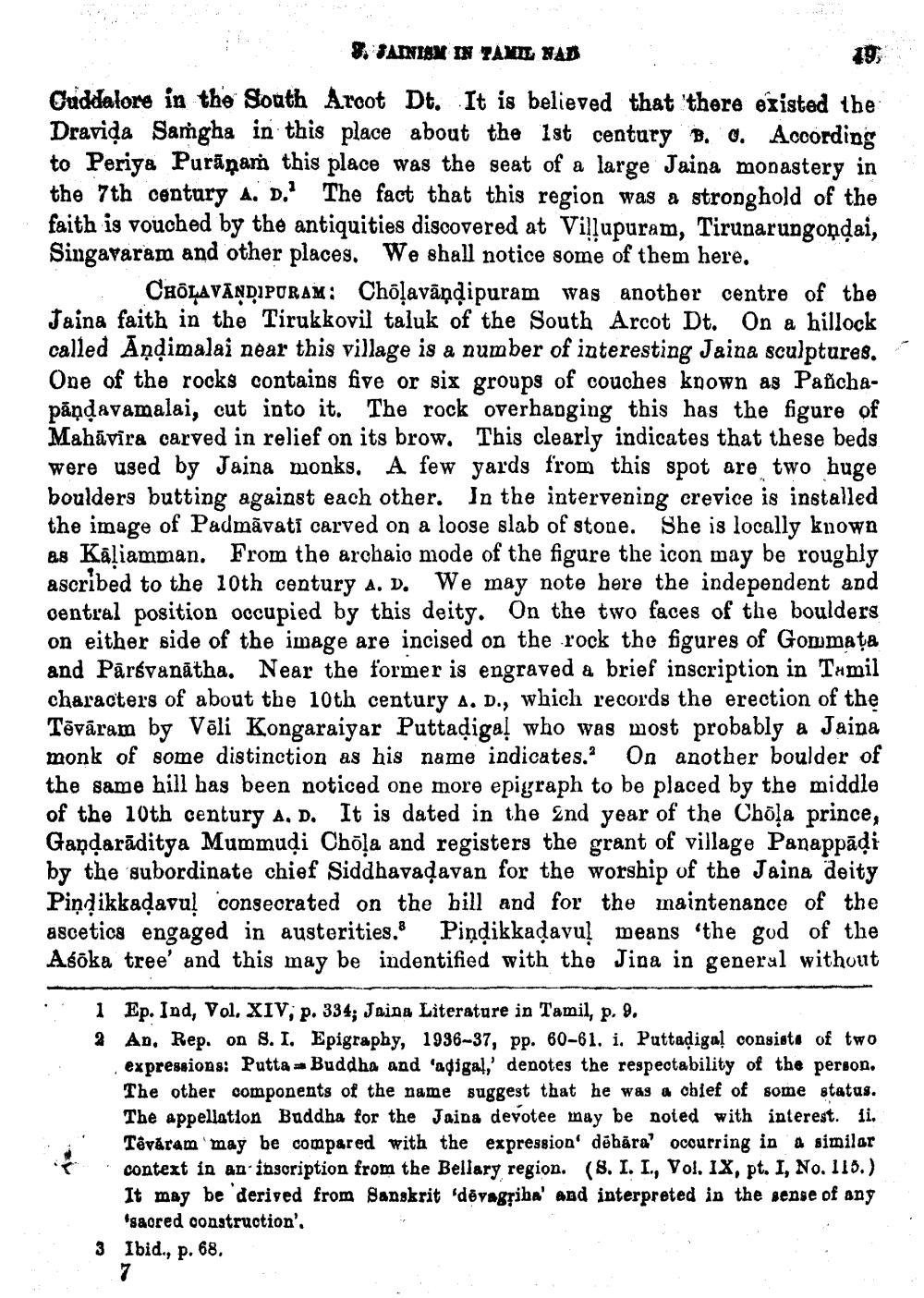________________
8. JAINISM IN TAMIL NAD Cuddalore in the South Arcot Dt. It is believed that there existed the Draviđa Samgha in this place about the 1st century B. Q. According to Periya Purāņam this place was the seat of a large Jaina monastery in the 7th century A. D.' The fact that this region was a stronghold of the faith is vouched by the antiquities discovered at Villupuram, Tirunarungondai, Singavarama and other places. We shall notice some of them here.
. CHÔLAVĀNDIPURAM; Cholavāņdipuram was another centre of the Jaina faith in the Tirukkovil taluk of the South Arcot Dt. On a hillock called Andimalai near this village is a number of interesting Jaina sculptures. One of the rocks contains five or six groups of couches known as Panchapāņdavamalai, cut into it. The rock overhanging this has the figure of Mahāvira carved in relief on its brow. This clearly indicates that these beds were used by Jaina monks. A few yards from this spot are two huge boulders butting against each other. In the intervening crevice is installed the image of Padmavati carved on a loose slab of stone. She is locally known as Kāliamman. From the archaio mode of the figure the icon may be roughly ascribed to the 10th century A. D. We may note here the independent and oentral position occupied by this deity. On the two faces of the boulders on either side of the image are incised on the rock the figures of Gommata and Pārsvanātha. Near the former is engraved a brief inscription in Tamil characters of about the 10th century A. D., which records the erection of the Tēvāram by Vēli Kongaraiyar Puttadiga! who was most probably a Jaina monk of some distinction as his name indicates. On another boulder of the same hill has been noticed one more epigraph to be placed by the middle of the 10th century A. D. It is dated in the 2nd year of the Chola prince, Gandarāditya Mummuļi Chõļa and registers the grant of village Panappādi by the subordinate chief Siddhavadavan for the worship of the Jaina deity Pindikkadavu! consecrated on the bill and for the maintenance of the ascetics engaged in austerities. Piņdikkadavu! means "the god of the Asöka tree' and this may be indentified with the Jina in generul without
.
1 Ep. Ind, Vol. XIV, p. 334; Jaina Literature in Tamil, p. 9. 2 An, Rep. on 8. I. Epigraphy, 1936-37, pp. 60-61. i. Puttadiga! consists of two
expressions: Putta Buddha and 'adigal,' denotes the respectability of the person. The other components of the name suggest that he was a chief of some status. The appellation Buddha for the Jaina devotee may be noted with interest. li. Téváram may be compared with the expression' döhära' ocourring in a similor context in an inscription from the Bellary region. (8. I. I., Vol. IX, pt. I, No. 115.) It may be derived from Sanskrit dovagriba' and interpreted in the sense of any
*sacred construction'. 3 Ibid., p. 68.
7




